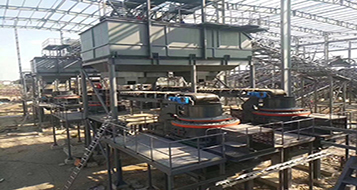The future of feldspar ball mills is expected to evolve with advancements in technology, sustainability, and efficiency, driven by the growing demand for feldspar in ceramics, glass, and construction industries. Here are key trends shaping its future:
1. Technological Advancements
– Automation & AI Integration: Smart ball mills with IoT sensors and AI-driven process optimization will enhance grinding efficiency, reduce energy consumption, and minimize downtime.
– Advanced Liner Materials: Wear-resistant liners (e.g., high-alumina ceramics) will extend mill lifespan and reduce maintenance costs.
– Variable Speed Drives (VSDs): Improved motor control for precise grinding adjustments based on feed quality.
2. Energy Efficiency & Sustainability
– High-Efficiency Grinding: Adoption of energy-saving designs (e.g., vertical roller mills as alternatives) to reduce power consumption.
– Waste Heat Recovery: Utilizing excess heat from milling processes for drying raw materials.
– Renewable Energy Use: Integration with solar/wind power to lower carbon footprints.
 3. Improved Grinding Media
3. Improved Grinding Media
– Ceramic & Composite Balls: Replacing traditional steel balls with advanced materials to reduce contamination and improve grinding fineness.
– Nano-Coated Media: Enhanced durability and performance for ultra-fine grinding applications.
4. Demand-Driven Customization
– Tailored Solutions: Ball mills designed for specific feldspar grades (potash vs. soda feldspar) to optimize particle size distribution.
– Modular Designs: Scalable systems for small-to-large-scale operations.
 5. Environmental Regulations & Circular Economy
5. Environmental Regulations & Circular Economy
– Dust Suppression Systems: Compliance with stricter air pollution norms.
– Recycling Slurry Waste: Reprocessing mill effluents to recover water and fine particles.
6. Emerging Markets & Applications
– High-Purity Feldspar for Electronics: Demand from lithium-ion battery and semiconductor industries may drive ultra-fine milling tech.
– 3D Printing Materials: Feldspar-based ceramics in additive manufacturing could spur niche milling innovations.
Challenges Ahead
– High capital costs for advanced mills.
– Competition from alternative grinding technologies (e.g., stirred media mills).
– Supply chain disruptions affecting raw material availability.
Conclusion
The feldspar ball mill of the future will likely be smarter, greener, and more




